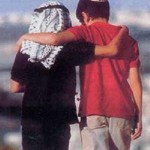In 1903 philosopher W.E.B. DuBois said the problem of the 20th century is the problem of the color line. The problem of the 21st century may well be the problem of the religion line.
The two are interconnected and feed off each other. This truth came into sharp focus last week in a Sikh temple outside of Milwaukee, where a white supremicist opened fire and killed six people at prayer.
I am from Milwaukee, so this act felt especially painful. That it came in the wake of the Colorado shootings only compounded my pain and frustration. While both shootings stem out of hatred and anger, the Sikh temple massacre carries a tragic resonance for people of faith. Adherents of a religion of peace became the target of murderous hate.
This is not an isolated incident. Just a few weeks ago, five Jews in Bulgaria were murdered for who they were and what they believed. Last month fifty Christians were burned alive in Nigeria while seeking safe haven in a pastor’s home. In Burma the Muslim minority has been increasingly targeted for rape and murder. Is there anything we can do?
A Single Garment of Destiny
Yes. We can recognize that people of every faith are tied together in a single garment of destiny.
When one group is targeted, we are all victims. People of one faith should be the most outspoken when adherents of another are attacked.
In America we have our problems. Yet, our founding fathers were extraordinary insightful and forward-thinking. They guaranteed freedom of religious expression in the First Amendment, and thereby assured that religions could flourish in freedom.
As democracy begins to take root in the Arab world, we need to share that vision. Fewer messages are more important and more urgent.
As my friend Pastor John Buchanan said, “There is one God: not a Jewish God, a Christian God, a Muslim, Buddhist, or Hindu God, but one God who created all of us, loves all of us, and is with all of us, always and forever.”


